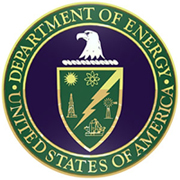
Cristian Acevedo (Civil Engineering)
About DOE Fellow
Mr. Cristian Acevedo is currently a senior pursuing a Bachelor’s degree in Civil Engineering with a minor in Mathematics at Florida International University (FIU). Cristian is a McNair Scholar and member of the American Society of Civil Engineers (ASCE). Cristian’s interests include analysis of advance structures, cementitious materials, and use of alternative materials for the construction of eco-friendly structures. Cristian is now living in Stanford, California continuing his education of pursing a PhD at Stanford University.
DOE Related Projects:
Currently, Cristian is working from FIU with engineers at Savannah River National Laboratory. His main tasks involve supportive research and experiments for the In-situ Decommissioning (ISD) of nuclear facilities. The ISD procedure is a method used to stabilize unused nuclear facilities with cementitious materials. Due to the radioactive contamination of these facilities, careful measures need to be taken in order to stabilize the contaminated structure. One of these measures involves developing and testing strong cementitious formulations to entomb the contaminated structure. In the Fall of 2009, Cristian conducted literary research on crack effects and development on cementitious materials, e.g., controlled-low strength materials (CLSM). A report was produced for Savannah River National Laboratory engineers.
Cristian interned at Savannah River National Laboratory for ten weeks during the Summer of 2009. At this internship, Cristian conducted intensive literary research investigating the effects of radiation on aging concrete structures of nuclear reactors. Moreover, Cristian produced a paper which he will be presenting at the Waste Management 2010 Symposium in Phoenix, AZ.
During the Fall of 2008 and Spring of 2009, Cristian worked with Mr. Prabhakar Pant on uranium remediation of the 300 Area at the Hanford Site in south-central Washington State. Cristian conducted preliminary sorption and desorption experiments with phosphate and Hanford soil. The project’s purpose was to prevent uranium from moving any further into the groundwater, which in turn contaminates the Columbia River.
One way to prevent the movement of uranium is through polyphosphate technology. This method uses phosphate to sequester aqueous uranium in autunite minerals and it precipitates apatite minerals for the sorption and continuous treatment of uranium in the treatment zone, reducing the uranium concentrations.
